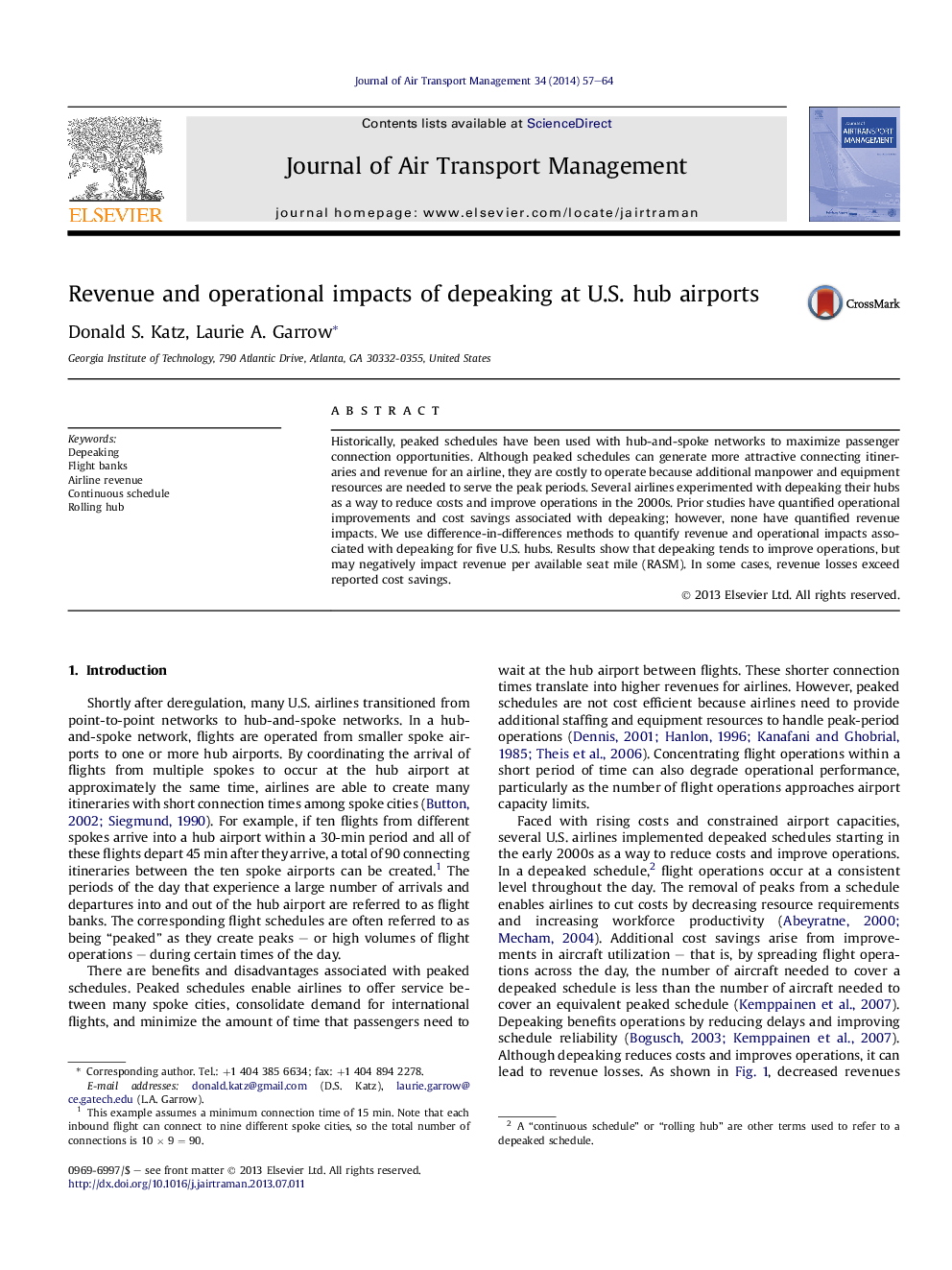| Article ID | Journal | Published Year | Pages | File Type |
|---|---|---|---|---|
| 7435989 | Journal of Air Transport Management | 2014 | 8 Pages |
Abstract
Historically, peaked schedules have been used with hub-and-spoke networks to maximize passenger connection opportunities. Although peaked schedules can generate more attractive connecting itineraries and revenue for an airline, they are costly to operate because additional manpower and equipment resources are needed to serve the peak periods. Several airlines experimented with depeaking their hubs as a way to reduce costs and improve operations in the 2000s. Prior studies have quantified operational improvements and cost savings associated with depeaking; however, none have quantified revenue impacts. We use difference-in-differences methods to quantify revenue and operational impacts associated with depeaking for five U.S. hubs. Results show that depeaking tends to improve operations, but may negatively impact revenue per available seat mile (RASM). In some cases, revenue losses exceed reported cost savings.
Keywords
Related Topics
Social Sciences and Humanities
Business, Management and Accounting
Strategy and Management
Authors
Donald S. Katz, Laurie A. Garrow,
